1.Identification
1.1 GHS Product identifier
| Product name | chlorobenzene |
|---|
1.2 Other means of identification
| Product number | - |
|---|---|
| Other names | monochloro-benzene |
1.3 Recommended use of the chemical and restrictions on use
| Identified uses | For industry use only. Volatile organic compounds |
|---|---|
| Uses advised against | no data available |
1.4 Supplier's details
| Company | MOLBASE (Shanghai) Biotechnology Co., Ltd. |
|---|---|
| Address | Floor 4 & 5, Building 12, No. 1001 North Qinzhou Road, Xuhui District, Shanghai, China |
| Telephone | +86(21)64956998 |
| Fax | +86(21)54365166 |
1.5 Emergency phone number
| Emergency phone number | +86-400-6021-666 |
|---|---|
| Service hours | Monday to Friday, 9am-5pm (Standard time zone: UTC/GMT +8 hours). |
2.Hazard identification
2.1 Classification of the substance or mixture
Flammable liquids, Category 3
Skin irritation, Category 2
Acute toxicity - Inhalation, Category 4
Hazardous to the aquatic environment, long-term (Chronic) - Category Chronic 2
2.2 GHS label elements, including precautionary statements
| Pictogram(s) |    |
|---|---|
| Signal word | Warning |
| Hazard statement(s) | H226 Flammable liquid and vapour H315 Causes skin irritation H332 Harmful if inhaled H411 Toxic to aquatic life with long lasting effects |
| Precautionary statement(s) | |
| Prevention | P210 Keep away from heat, hot surfaces, sparks, open flames and other ignition sources. No smoking. P233 Keep container tightly closed. P240 Ground and bond container and receiving equipment. P241 Use explosion-proof [electrical/ventilating/lighting/...] equipment. P242 Use non-sparking tools. P243 Take action to prevent static discharges. P280 Wear protective gloves/protective clothing/eye protection/face protection. P264 Wash ... thoroughly after handling. P261 Avoid breathing dust/fume/gas/mist/vapours/spray. P271 Use only outdoors or in a well-ventilated area. P273 Avoid release to the environment. |
| Response | P303+P361+P353 IF ON SKIN (or hair): Take off immediately all contaminated clothing. Rinse skin with water [or shower]. P370+P378 In case of fire: Use ... to extinguish. P302+P352 IF ON SKIN: Wash with plenty of water/... P321 Specific treatment (see ... on this label). P332+P313 If skin irritation occurs: Get medical advice/attention. P362+P364 Take off contaminated clothing and wash it before reuse. P304+P340 IF INHALED: Remove person to fresh air and keep comfortable for breathing. P312 Call a POISON CENTER/doctor/…if you feel unwell. P391 Collect spillage. |
| Storage | P403+P235 Store in a well-ventilated place. Keep cool. |
| Disposal | P501 Dispose of contents/container to ... |
2.3 Other hazards which do not result in classification
none
3.Composition/information on ingredients
3.1 Substances
| Chemical name | Common names and synonyms | CAS number | EC number | Concentration |
|---|---|---|---|---|
| chlorobenzene | chlorobenzene | 108-90-7 | none | 100% |
4.First-aid measures
4.1 Description of necessary first-aid measures
General advice
Consult a physician. Show this safety data sheet to the doctor in attendance.
If inhaled
Fresh air, rest. Refer for medical attention.
In case of skin contact
Refer for medical attention .
In case of eye contact
First rinse with plenty of water for several minutes (remove contact lenses if easily possible), then refer for medical attention.
If swallowed
Rinse mouth. Do NOT induce vomiting. Refer for medical attention .
4.2 Most important symptoms/effects, acute and delayed
Irritating to skin, eyes and mucous membranes. Repeated exposure of skin may cause dermatitis due to defatting action. Chronic inhalation of vapors or mist may result in damage to lungs, liver, and kidneys. Acute vapor exposures can cause symptoms ranging from coughing to transient anesthesia and central nervous system depression. (USCG, 1999)
4.3 Indication of immediate medical attention and special treatment needed, if necessary
Immediate first aid: Ensure that adequate decontamination has been carried out. If patient is not breathing, start artificial respiration, preferably with a demand-valve resuscitator, bag-valve-mask device, or pocket mask, as trained. Perform CPR as necessary. Immediately flush contaminated eyes with gently flowing water. Do not induce vomiting. If vomiting occurs, lean patient forward or place on left side (head-down position, if possible) to maintain an open airway and prevent aspiration. Keep patient quiet and maintain normal body temperature. Obtain medical attention. /Benzene and Related Compounds/
5.Fire-fighting measures
5.1 Extinguishing media
Suitable extinguishing media
Wear self contained breathing apparatus for fire fighting if necessary.
5.2 Specific hazards arising from the chemical
Special Hazards of Combustion Products: Burning in open flame can form toxic phosgene and hydrogen chloride gases. Behavior in Fire: Heavy vapor can travel a considerable distance to a source of ignition and flash back. (USCG, 1999)
5.3 Special protective actions for fire-fighters
Wear self-contained breathing apparatus for firefighting if necessary.
6.Accidental release measures
6.1 Personal precautions, protective equipment and emergency procedures
Use personal protective equipment. Avoid dust formation. Avoid breathing vapours, mist or gas. Ensure adequate ventilation. Evacuate personnel to safe areas. Avoid breathing dust. For personal protection see section 8.
6.2 Environmental precautions
Remove all ignition sources. Personal protection: filter respirator for organic gases and vapours adapted to the airborne concentration of the substance. Do NOT let this chemical enter the environment. Ventilation. Collect leaking liquid in sealable containers. Absorb remaining liquid in sand or inert absorbent. Then store and dispose of according to local regulations.
6.3 Methods and materials for containment and cleaning up
ACCIDENTAL RELEASE MEASURES. Personal precautions, protective equipment and emergency procedures: Use personal protective equipment. Avoid breathing vapours, mist or gas. Ensure adequate ventilation. Remove all sources of ignition. Beware of vapours accumulating to form explosive concentrations. Vapours can accumulate in low areas. Environmental precautions: Prevent further leakage or spillage if safe to do so. Do not let product enter drains. Discharge into the environment must be avoided. Methods and materials for containment and cleaning up: Contain spillage, and then collect with an electrically protected vacuum cleaner or by wet-brushing and place in container for disposal according to local regulations.
7.Handling and storage
7.1 Precautions for safe handling
Avoid contact with skin and eyes. Avoid formation of dust and aerosols. Avoid exposure - obtain special instructions before use.Provide appropriate exhaust ventilation at places where dust is formed. For precautions see section 2.2.
7.2 Conditions for safe storage, including any incompatibilities
Fireproof. Separated from strong oxidants.Keep container tightly closed in a dry and well-ventilated place. Containers whigh are opened must be carefully resealed and kept upright to prevent leakage.
8.Exposure controls/personal protection
8.1 Control parameters
Occupational Exposure limit values
NIOSH questioned whether the PEL [TWA 75 ppm] proposed for chlorobenzene was adequate to protect workers from recognized health hazards.
Biological limit values
no data available
8.2 Appropriate engineering controls
Handle in accordance with good industrial hygiene and safety practice. Wash hands before breaks and at the end of workday.
8.3 Individual protection measures, such as personal protective equipment (PPE)
Eye/face protection
Safety glasses with side-shields conforming to EN166. Use equipment for eye protection tested and approved under appropriate government standards such as NIOSH (US) or EN 166(EU).
Skin protection
Wear impervious clothing. The type of protective equipment must be selected according to the concentration and amount of the dangerous substance at the specific workplace. Handle with gloves. Gloves must be inspected prior to use. Use proper glove removal technique(without touching glove's outer surface) to avoid skin contact with this product. Dispose of contaminated gloves after use in accordance with applicable laws and good laboratory practices. Wash and dry hands. The selected protective gloves have to satisfy the specifications of EU Directive 89/686/EEC and the standard EN 374 derived from it.
Respiratory protection
Wear dust mask when handling large quantities.
Thermal hazards
no data available
9.Physical and chemical properties
| Physical state | colourless liquid |
|---|---|
| Colour | Colorless liquid |
| Odour | Faint, not unpleasant odor |
| Melting point/ freezing point | -45ºC |
| Boiling point or initial boiling point and boiling range | 132°C(lit.) |
| Flammability | Class IC Flammable Liquid: Fl.P. at or above 22.78°C and below 37.78°C.Flammable. Gives off irritating or toxic fumes (or gases) in a fire. |
| Lower and upper explosion limit / flammability limit | Lower flammable limit: 1.3%; Upper flammable limit: 9.6% |
| Flash point | 27°C |
| Auto-ignition temperature | 636.67°C |
| Decomposition temperature | no data available |
| pH | no data available |
| Kinematic viscosity | 0.806 mPa.s at 20°C |
| Solubility | In water:0.4 g/L (20 ºC) |
| Partition coefficient n-octanol/water (log value) | log Kow = 2.84 |
| Vapour pressure | 11.8 mm Hg ( 25 °C) |
| Density and/or relative density | 1.106g/mLat 25°C(lit.) |
| Relative vapour density | 3.86 (vs air) |
| Particle characteristics | no data available |
10.Stability and reactivity
10.1 Reactivity
no data available
10.2 Chemical stability
Stable under recommended storage conditions.
10.3 Possibility of hazardous reactions
Dangerous fire hazard when exposed to heat or flame.CHLOROBENZENE undergoes a sometimes explosive reaction with powdered sodium or phosphorus trichloride + sodium. May react violently with dimethyl sulfoxide. Reacts vigorously with oxidizing agents. Attacks some forms of plastic, rubber and coatings. Forms a shock sensitive solvated salt with silver perchlorate. .
10.4 Conditions to avoid
no data available
10.5 Incompatible materials
Contact with strong oxidizers may cause fires and explosions.
10.6 Hazardous decomposition products
Flammable liquid. Vapors are heavier than air and may travel to a source of ignition and flash back. Combustion by-products include phosgene and hydrogen chloride gases.
11.Toxicological information
Acute toxicity
- Oral: LD50 Rat oral 2.29 g/kg
- Inhalation: LC50 Rat (male) inhalation 2965 ppm (13.9 mg/L) for 6 hr /99% purity/
- Dermal: no data available
Skin corrosion/irritation
no data available
Serious eye damage/irritation
no data available
Respiratory or skin sensitization
no data available
Germ cell mutagenicity
no data available
Carcinogenicity
Cancer Classification: Group D Not Classifiable as to Human Carcinogenicity
Reproductive toxicity
No information is available on the reproductive or developmental effects of chlorobenzene in humans. Chronic inhalation exposure of rats to chlorobenzene did not adversely affect reproductive performance or fertility. However, a slight increase in the incidence of degenerative testicular changes was observed. Chlorobenzene does not appear to be a developmental toxicant and did not produce structural malformations in rats and rabbits acutely exposed via inhalation.
STOT-single exposure
no data available
STOT-repeated exposure
no data available
Aspiration hazard
no data available
12.Ecological information
12.1 Toxicity
- Toxicity to fish: LC50; Species: Danio rerio (Zebra danio); Conditions: freshwater, static, 23°C, pH 7.4, hardness 320 mg/L CaCO3, dissolved oxygen > or =70%; Concentration: 10500 ug/L for 48 hr (95% confiedence interval: 7100-15500 ug/L)
- Toxicity to daphnia and other aquatic invertebrates: EC50; Species: Daphnia magna (Water flea); Conditions: freshtwater, static; Concentration: 4300 ug/L for 24 hr (95% confidence interval: 3250-5700 ug/L); Effect: intoxication, immobilization
- Toxicity to algae: EC50; Species: Pseudokirchneriella subcapitata (Green algae) initial concentration 500000 cells/L; Conditions: static, 20°C; Concentration: 12500 ug/L for 96 hr; Effect: growth, general
- Toxicity to microorganisms: no data available
12.2 Persistence and degradability
Information ... concerning the biodegradation potential of chlorobenzene indicates that this compound will ... eventually degrade, but not at an environmentally important rate unless the microorganisms present are already growing on another hydrocarbon source.
12.3 Bioaccumulative potential
BCF values of 4.3 to 39.6 and 3.9 to 22.8 were measured for chlorobenzene in carp (Cyprinus carpio) at chemical concentrations of 0.15 and 0.015 mg/L, respectively(1). A log BCF of 2.65 has been reported for chlorobenzene in fathead minnows(2) that corresponds to a BCF of 450(SRC). A BCF of 41 was measured in bluegill fish (Lepomis macrochirus) over a 14-day exposure period(3). According to a classification scheme(4), these BCF values suggest the potential for bioconcentration in aquatic organisms ranges from low to high, provided the compound is not metabolized by the organism(SRC). Dissolved organic matter that is present in interstitial water may greatly reduce the amount of a chemical that is available for accumulation(5). In one set of experiments, midge larvae were found to accumulate higher tissue-to-sediment ratios of chlorobenzene from a low-organic content sediment than from a high-organic content sediment(5). BCFs of 0.25 (from sediment), 11 (from interstitial water), and 10 (overlying water) were measured for midge larvae exposed to chlorobenzene under equilibrium exposure conditions(5). BCFs of 0.15 (from sediment), 310 (from interstitial water), and 5 (from overlying water) were measured for midge larvae exposed to chlorobenzene sorbed to high-organic content sediment under nonequilibrium exposure conditions(5). BCFs of 0.72 (from sediment), 18 (from interstitial water), and 2,187 (from overlying water) were measured for midge larvae exposed to chlorobenzene sorbed to low-organic content sediment under nonequilibrium exposure conditions(5).
12.4 Mobility in soil
Koc values of 313.1 and 146.5 were measured on Captina silt loam (1.49% organic carbon) and McLaurin sandy loam, (0.66% organic carbon), respectively(1). Equilibrium sorption constant (Ks) values of 0.295 and 0.09 were determined in Eustis fine sand (13 g/kg clay, 32 g/kg silt, 955 g/kg sand, 3.9 g/kg organic carbon) and Tampa (6 g/kg clay, 23 g/kg silt, 971 g/kg sand, and 1.3 g/kg organic carbon) soils, respectively(2); corresponding Koc values are 76 and 69(SRC). Equilibrium sorption coefficients of 0.014 and 10.20 were measured on Borden (98% sand, 1% silt, 1% clay, 0.29% organic carbon) and Mt. Lemmon (60.3% sand, 24.0% silt, 15.7% clay, 12.6% organic carbon) soils, respectively(3); corresponding Koc values are 4.8 and 81(SRC). According to a classification scheme(4), these Koc values suggest that chlorobenzene is expected to have moderate to very high mobility in soil(SRC). The sorption isotherm for chlorobenzene onto muck soil (49.0% organic carbon) was linear(5). A Kd value of 166.34 was measured for chlorobenzene using dewatered activated sludge (18% solids) that had been dried and sieved; 3.28% of the chlorobenzene was desorbed during the desorption phase of the experiment(6). Partition coefficients of 0.35, 0.33, and 0.38 were measured for chlorobenzene on primary sludge, mixed liquor solids, and digested sludge, respectively(7). Sorption coefficients of 0.48 and 0.29 were measured on primary sludge and anaerobically digested sludge, respectively(8). Partition coefficients of 48 and 29 were measured in high organic carbon (14.5%) and low organic carbon (3.6%) Sherman Island sediments, respectively(9).
12.5 Other adverse effects
no data available
13.Disposal considerations
13.1 Disposal methods
Product
The material can be disposed of by removal to a licensed chemical destruction plant or by controlled incineration with flue gas scrubbing. Do not contaminate water, foodstuffs, feed or seed by storage or disposal. Do not discharge to sewer systems.
Contaminated packaging
Containers can be triply rinsed (or equivalent) and offered for recycling or reconditioning. Alternatively, the packaging can be punctured to make it unusable for other purposes and then be disposed of in a sanitary landfill. Controlled incineration with flue gas scrubbing is possible for combustible packaging materials.
14.Transport information
14.1 UN Number
| ADR/RID: UN1134 | IMDG: UN1134 | IATA: UN1134 |
14.2 UN Proper Shipping Name
| ADR/RID: CHLOROBENZENE |
| IMDG: CHLOROBENZENE |
| IATA: CHLOROBENZENE |
14.3 Transport hazard class(es)
| ADR/RID: 3 | IMDG: 3 | IATA: 3 |
14.4 Packing group, if applicable
| ADR/RID: III | IMDG: III | IATA: III |
14.5 Environmental hazards
| ADR/RID: yes | IMDG: yes | IATA: yes |
14.6 Special precautions for user
no data available
14.7 Transport in bulk according to Annex II of MARPOL 73/78 and the IBC Code
no data available
15.Regulatory information
15.1 Safety, health and environmental regulations specific for the product in question
| Chemical name | Common names and synonyms | CAS number | EC number |
|---|---|---|---|
| chlorobenzene | chlorobenzene | 108-90-7 | none |
| European Inventory of Existing Commercial Chemical Substances (EINECS) | Listed. | ||
| EC Inventory | Listed. | ||
| United States Toxic Substances Control Act (TSCA) Inventory | Listed. | ||
| China Catalog of Hazardous chemicals 2015 | Listed. | ||
| New Zealand Inventory of Chemicals (NZIoC) | Listed. | ||
| Philippines Inventory of Chemicals and Chemical Substances (PICCS) | Listed. | ||
| Vietnam National Chemical Inventory | Listed. | ||
| Chinese Chemical Inventory of Existing Chemical Substances (China IECSC) | Listed. | ||
16.Other information
Information on revision
| Creation Date | Aug 12, 2017 |
|---|---|
| Revision Date | Aug 12, 2017 |
Abbreviations and acronyms
- CAS: Chemical Abstracts Service
- ADR: European Agreement concerning the International Carriage of Dangerous Goods by Road
- RID: Regulation concerning the International Carriage of Dangerous Goods by Rail
- IMDG: International Maritime Dangerous Goods
- IATA: International Air Transportation Association
- TWA: Time Weighted Average
- STEL: Short term exposure limit
- LC50: Lethal Concentration 50%
- LD50: Lethal Dose 50%
- EC50: Effective Concentration 50%
References
- IPCS - The International Chemical Safety Cards (ICSC), website: http://www.ilo.org/dyn/icsc/showcard.home
- HSDB - Hazardous Substances Data Bank, website: https://toxnet.nlm.nih.gov/newtoxnet/hsdb.htm
- IARC - International Agency for Research on Cancer, website: http://www.iarc.fr/
- eChemPortal - The Global Portal to Information on Chemical Substances by OECD, website: http://www.echemportal.org/echemportal/index?pageID=0&request_locale=en
- CAMEO Chemicals, website: http://cameochemicals.noaa.gov/search/simple
- ChemIDplus, website: http://chem.sis.nlm.nih.gov/chemidplus/chemidlite.jsp
- ERG - Emergency Response Guidebook by U.S. Department of Transportation, website: http://www.phmsa.dot.gov/hazmat/library/erg
- Germany GESTIS-database on hazard substance, website: http://www.dguv.de/ifa/gestis/gestis-stoffdatenbank/index-2.jsp
- ECHA - European Chemicals Agency, website: https://echa.europa.eu/





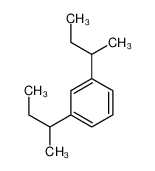

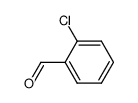




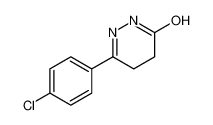

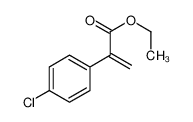









-
-

-
-
-

-
-
-

-
-
-
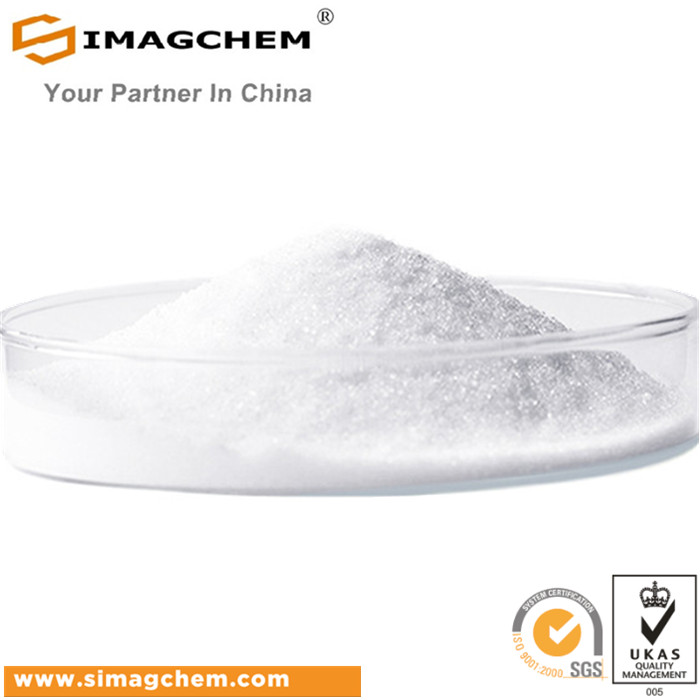
-
-
-

-
-
-

-
-
-

-
-
-

-
-
-
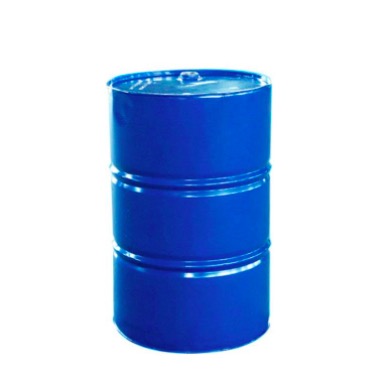
-
-
-
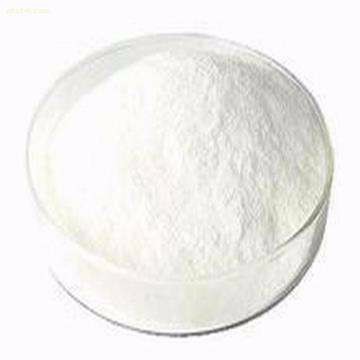
-
More Suppliers>>JAPAN
Purity: 99%
Lead Time: 1 Week(s)
Price: -
Wenzhou Win-Win Chemical Co., Ltd.
CHINA
Purity: 98%
Lead Time: 1 Week(s)
Price: -
Hangzhou J&H Chemical Co., Ltd.
CHINA
Purity: >97%
Lead Time: 7 Day(s)
Price: -
Xiamen Zhixin Chemical Co., Ltd.
CHINA
Purity: 99%
Lead Time: 3 Day(s)
Price: -
Skyrun Industrial Co., Limited
CHINA
Purity: 99%
Lead Time: 7 Day(s)
Price: -
Henan Coreychem Co.,Ltd
CHINA
Purity: 98%
Lead Time: 3 Day(s)
Price: Min $1 /g
Hangzhou DayangChem Co., Ltd
CHINA
Purity: 98%
Lead Time: 7 Day(s)
Price: -
Hangzhou Bingochem Co., Ltd.
CHINA
Purity: 98%
Lead Time: 7 Day(s)
Price: -
CHINA
Purity: 99%
Lead Time: 3 Day(s)
Price: Min $1 /kg
Wuhan Canos Technology Co., Ltd.
CHINA
Purity: 99%
Lead Time: 2 Day(s)
Price: Min $40 /ml